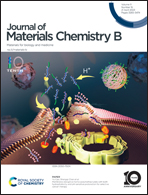Recent advances in adhesive materials used in the biomedical field: adhesive properties, mechanism, and applications
Abstract
Adhesive materials are natural or synthetic polymers with the ability to adhere to the surface of luminal mucus or epithelial cells. They are widely used in the biomedical field due to their unique adhesion, biocompatibility, and excellent surface properties. When used in the human body, they can adhere to an accessible target and remain at the focal site for a longer period, improving the therapeutic effect on local disease. An adhesive material with bacteriostatic properties can play an antibacterial role at the focal site and the adhesive properties of the material can prevent the focal site from being infected by bacteria for a period. In addition, some adhesive materials can promote cell growth and tissue repair. In this review, the properties and mechanism of natural adhesive materials, organic adhesive materials, composite adhesive materials, and underwater adhesive materials have been introduced systematically. The applications of these adhesive materials in drug delivery, antibacterials, tissue repair, and other applications are described in detail. Finally, we have discussed the prospects and challenges of using adhesive materials in the field of biomedicine.

- This article is part of the themed collection: Journal of Materials Chemistry B Recent Review Articles


 Please wait while we load your content...
Please wait while we load your content...